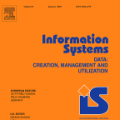Process mining employs event data extracted from different types of information systems to discover and analyze actual processes. Event data often contain highly sensitive information about the people who carry out activities or the people for whom activities are performed. Therefore, privacy concerns in process mining are receiving increasing attention. To alleviate privacy-related risks, several privacy preservation techniques have been proposed. Differential privacy is one of these techniques which provides strong privacy guarantees. However, the proposed techniques presume that event data are released in only one shot, whereas business processes are continuously executed. Hence, event data are published repeatedly, resulting in additional risks. In this paper, we demonstrate that continuously released event data are not independent, and the correlation among different releases can result in privacy degradation when the same differential privacy mechanism is applied to each release. We quantify such privacy degradation in the form of temporal privacy leakages. We apply continuous event data publishing scenarios to real-life event logs to demonstrate privacy leakages.
翻译:采矿过程利用从不同类型的信息系统中提取的事件数据发现和分析实际过程。事件数据往往包含关于开展活动的人或开展活动的人的高度敏感信息。因此,对采矿过程中的隐私关切越来越受到重视。为了减轻与隐私有关的风险,提出了若干保护隐私的技术。不同的隐私是提供强有力的隐私保障的这些技术之一。然而,拟议的技术假定事件数据仅以一次镜头发布,而业务流程则持续执行。因此,事件数据反复公布,从而导致更多的风险。在本文件中,我们表明持续发布的事件数据不是独立的,当对每次发布时都采用同样的差异隐私机制时,不同释放之间的关联可能导致隐私退化。我们以时间隐私泄漏的形式量化此类隐私退化。我们用连续事件数据发布假想来显示隐私泄漏。我们用实时事件日志来显示隐私泄漏。
相关内容
Source: Apple - iOS 8




